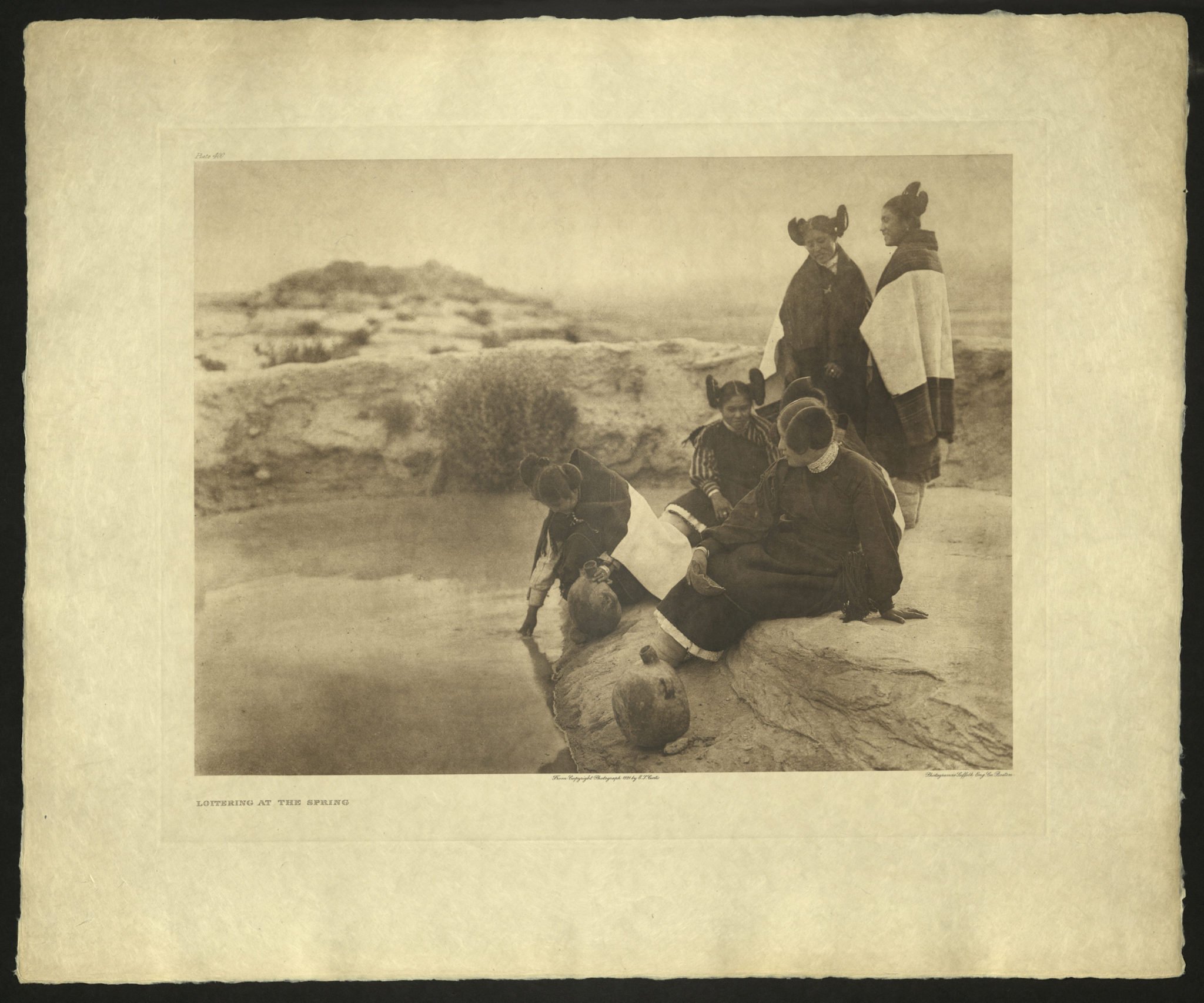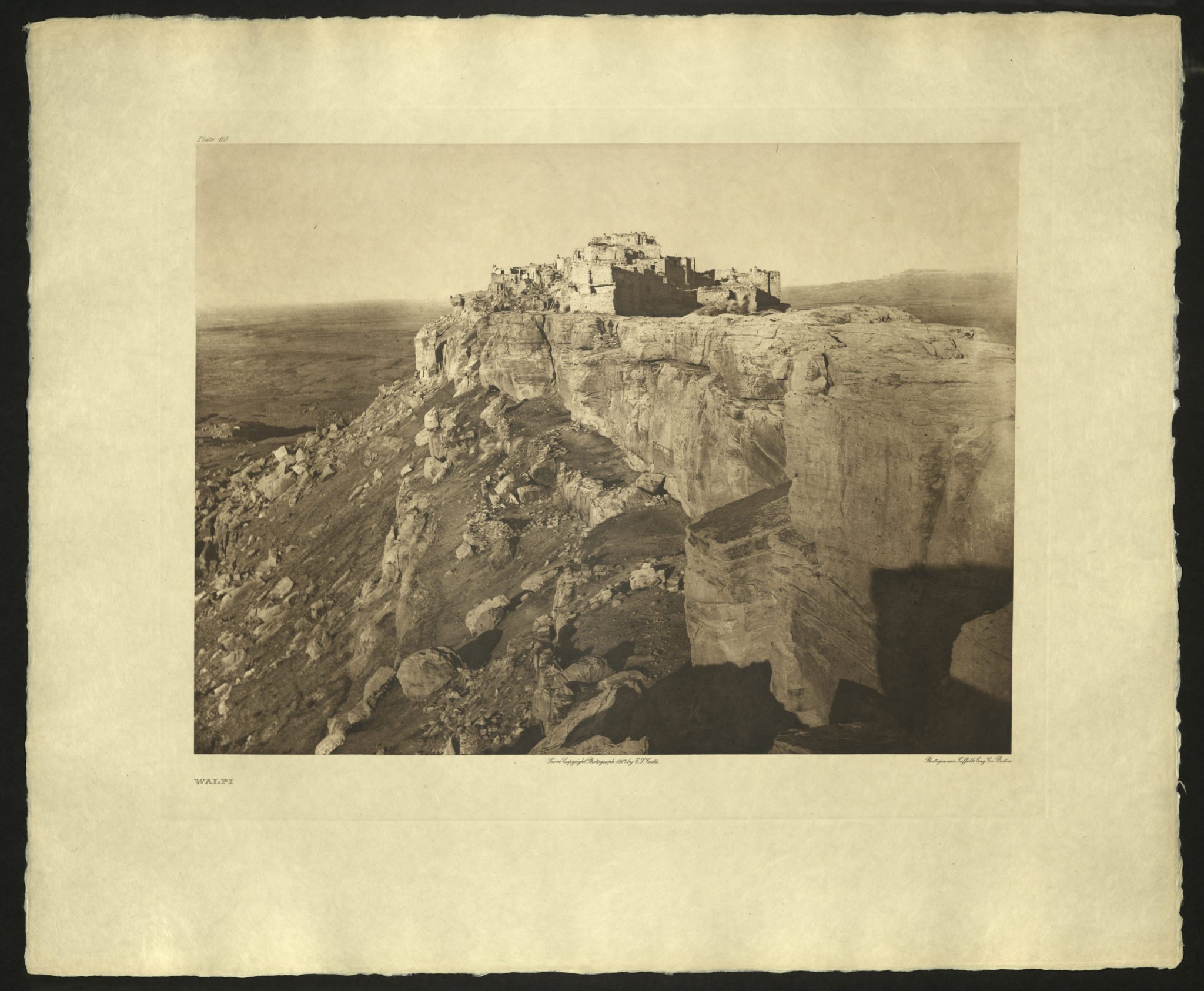The North American Indian, Edward S. Curtis
A collection of 2,232 photogravures of American Indians taken between 1890 and 1930 and published between 1907 and 1930. A massive project, professional photographer Edward Curtis’ intention was to document every major tribe west of the Mississippi, portraying what he perceived to be a vanishing culture. While he was neither the first nor the last person to photograph the American Indian, he was surely the most prolific. His monumental publication presented to the public an extensive ethnographic study of numerous peoples.
The North American Indian consists of twenty portfolios of photogravures and twenty volumes of field notes bound with smaller gravures. A photogravure is made from a printing process utilizing a copper plate that is made from a glass positive which itself is made from a glass negative. The plate is hand wiped with sepia inks. Excess ink is removed and the plate is forced onto paper with a handpress, capturing all the etched details on the plate. The photogravure produces a soft, atmospheric appearance similar to that achieved by French Impressionist painters. This photographic process, along with drawing and painting on negatives, platinotypes and gum prints, was popular at the end of the nineteenth century. The movement, known as “Pictorialism” was a way for photographers to add personal vision and expression to their works.









